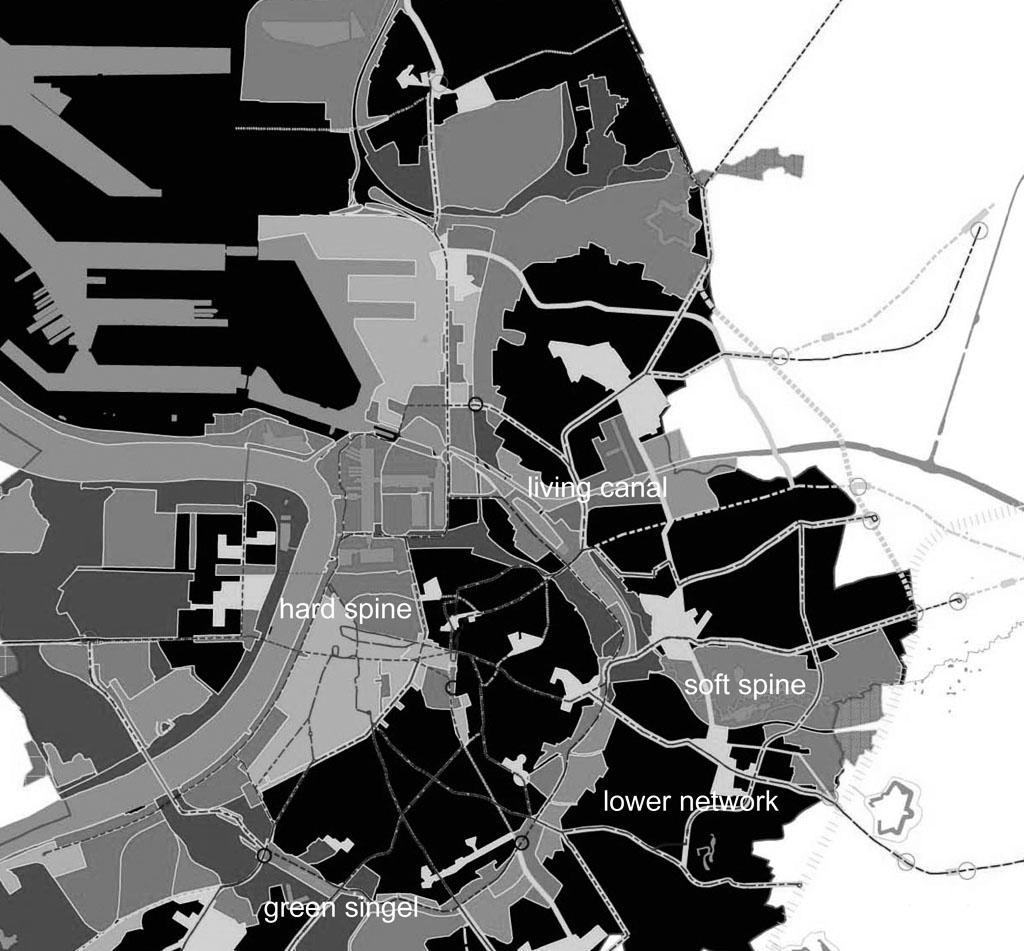20-02-14 // WORKING WITH GEOGRAPHY – INTERVIEW WITH BERNARDO SECCHI

Locations of strategic spaces and strategic projects in Antwerp, ©Studio Associato Bernardo Secchi Paola Viganò
Bernd Upmeyer spoke on behalf of MONU with the Italian, internationally renowned, teacher, practitioner, and theoretician of urban planning Bernardo Secchi. Secchi has taught architecture and urbanism in many universities: Milan, Venice, Geneva, Leuven, Zurich, and Rennes. In Venice, he is professor emeritus of urbanism at the Venice School of Architecture. From 1975 to 1982 he was the Dean of the Milan School of architecture. Since 1990 he has been associated with Paola Viganò in the Studio Associato Bernardo Secchi Paola Viganò based in Milan and other cities including Brussels. The interview took place on February 20, 2014.
Urban Design and Geography
Bernd Upmeyer: During your long career as an urbanist you have done a lot of studies and made many master plans in cities of countries that were very different when it comes to their geography, by which we mean the physical geography, and in particular the natural geographical features such as landforms, terrain types, or bodies of water. What meaning does physical geography have for your projects?
Bernardo Secchi: For me, physical geography is very important. It is the starting point for all our ideas about planning. When we start working, our first step is always to study very carefully the physical geography, which means three things to us: firstly, topography, secondly, the problem of the waters and how they contribute to the form of the ground, and thirdly, the nature of the soil. What is important for us, and that is the reason why we consider the physical geography as the starting point of any idea for any city or a territory, is that over time people transform geography, and especially topography, into topology. In Brussels, for example, the city develops along a valley. But the rich people wanted to live in the hills and on the slopes, so the poor people were obliged to live in the valley. In that way the physical geography of the Brussels region influenced the social and political geography. But as we can see, the starting point was the physical geography. In fact, this happens more or less everywhere.
BU: You have done particularly many projects in cities in Belgium and Switzerland. What influence did these different geographical contexts have on your projects?
BS: Every region in Europe uses geography in a different way, with the same elements, but in a different way. For instance, if you go to Switzerland, you will see that the physical geography is very nice: it is constituted by very high mountains. The villages in these mountains have had a destiny in modern times: some of them were abandoned because culture was not possible and others, on the contrary, became tourist villages. So, here too we can see a transformation in the geography and the topology…
…the complete interview was published in MONU #20 on the topic of Geographical Urbanism on April 14, 2014.
Title: Working with Geography
Project: Interview with Bernardo Secchi
Date: February 2014
Type: Commissioned interview
Topic: Geographical Urbanism
Organizer: MONU
Status: Published
Publications: MONU #20, P. 28-33
Interviewer: Bernd Upmeyer